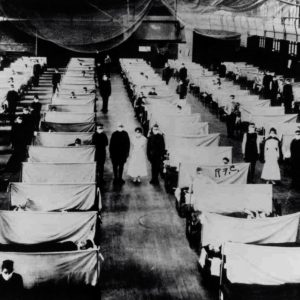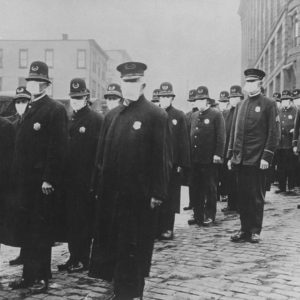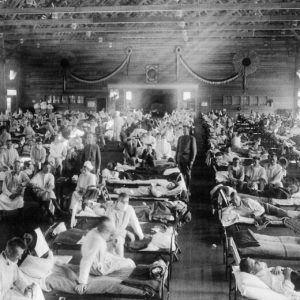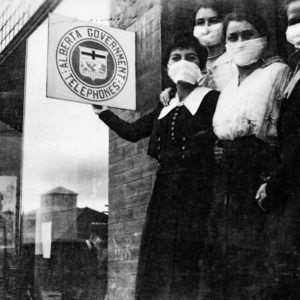Influenza ward at Walter Reed Hospital,
in Washington, D.C. during the Spanish
flu pandemic of 1918–1919.
The Spanish flu pandemic 1918 to 1920
The Spanish flu pandemic lasted from 1918 to 1920.
Older estimates say it killed 40–50 million people while current estimates say 50 million to 100 million people worldwide were killed.
This pandemic has been described as “the greatest medical holocaust in history” and may have killed as many people as the Black Death, although the Black Death is estimated to have killed over a fifth of the world’s population at the time, a significantly higher proportion.
This huge death toll was caused by an extremely high infection rate of up to 50% and the extreme severity of the symptoms, suspected to be caused by cytokine storms.
Indeed, symptoms in 1918 were so unusual that initially influenza was misdiagnosed as dengue, cholera, or typhoid. One observer wrote, “One of the most striking of the complications was hemorrhage from mucous membranes, especially from the nose, stomach, and intestine. Bleeding from the ears and petechial hemorrhages in the skin also occurred.” The majority of deaths were from bacterial pneumonia, a secondary infection caused by influenza, but the virus also killed people directly, causing massive hemorrhages and edema in the lung.
The Spanish flu pandemic was truly global, spreading even to the Arctic and remote Pacific islands. The unusually severe disease killed between 10 and 20% of those infected, as opposed to the more usual flu epidemic mortality rate of 0.1%. Another unusual feature of this pandemic was that it mostly killed young adults, with 99% of pandemic influenza deaths occurring in people under 65, and more than half in young adults 20 to 40 years old. This is unusual since influenza is normally most deadly to the very young (under age 2) lo and the very old (over age 70). The total mortality of the 1918–1919 pandemic is estimated to be between 50 and 100 million people, constituting approximately 3–6% of the world’s population. As many as 25 million may have been killed in the first 25 weeks; in contrast, HIV/AIDS has killed 25 million in its first 25 years.
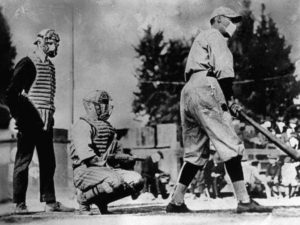
*****
Covid 19 Pandemic
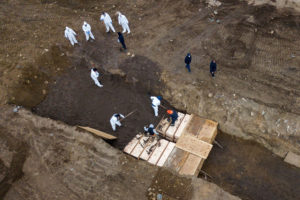
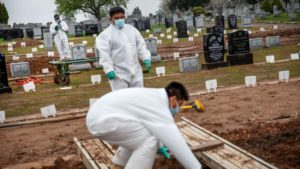
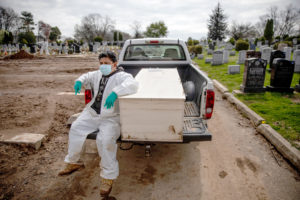
Information 감사합니다
http://www.loaloachristiannetwork.com/
<Photo & Info from app>

